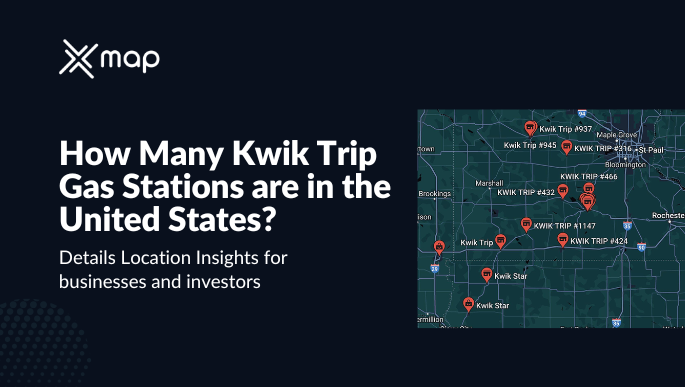Exploring Kwik Trip Gas Stations in the U.S.: Locations, Customer Experience and Market Share

- Remove the current class from the content27_link item as Webflows native current state will automatically be applied.
- To add interactions which automatically expand and collapse sections in the table of contents, select the content27_h-trigger element, add an element trigger, and select Mouse click (tap).
- For the 1st click, select the custom animation Content 27 table of contents [Expand], and for the 2nd click, select the custom animation Content 27 table of contents [Collapse].
- In the Trigger Settings, deselect all checkboxes other than Desktop and above. This disables the interaction on tablet and below to prevent bugs when scrolling.
When people think of convenience stores and gas stations in the Midwest, one name almost always comes up: Kwik Trip. Known for its friendly service, fresh food, and spotless facilities, Kwik Trip has transformed the way Americans view roadside stops. But in 2025, Kwik Trip is no longer just a regional player. With over 900 stores across Wisconsin, Minnesota, and Iowa — and expansion moves shaking up the industry — Kwik Trip’s footprint has grown into a fascinating case study of customer loyalty and market strength.
In this article, we’ll explore where Kwik Trip stations are located, what makes them stand out, how they compare to national competitors, and what customer reviews reveal about the brand.
A Brief History of Kwik Trip’s Rise
Kwik Trip started in 1965 in Eau Claire, Wisconsin, as a small convenience store with fuel pumps out front. Over time, it became a family-owned empire, still privately held today. Unlike some chains that expand aggressively coast-to-coast, Kwik Trip has taken a slow-and-steady Midwest-focused approach, investing deeply in each market before moving outward.
That strategy has paid off. By 2025, Kwik Trip operates over 940 stores, employs more than 35,000 people, and generates annual revenues estimated at $5.8 billion. It’s not just about fuel sales anymore; nearly 70% of its in-store revenue comes from food and beverages, from its famous Glazer donuts to take-home meals.
Kwik Trip Gas Stations by State in 2025
Kwik Trip’s store distribution reflects its Midwestern DNA. While other chains like Circle K or 7-Eleven spread nationally, Kwik Trip has concentrated its power in just a few states — but with high density.
Here’s the 2025 breakdown of Kwik Trip locations by state:
📍 Notice how over half of all Kwik Trip stations are in Wisconsin. This saturation allows them to dominate local markets, with multiple stores often located just miles apart. Compare that to chains like Chevron or ExxonMobil, which scatter thousands of locations nationally — Kwik Trip prefers depth over breadth.
Fuel Sales and Market Share
Gas stations in 2025 are facing tight margins on fuel. Nationally, profits on gas itself hover around 5–7 cents per gallon, which means companies like Kwik Trip rely heavily on in-store sales. But even with that, Kwik Trip sells nearly 2.5 billion gallons of fuel annually, making it one of the top 15 fuel retailers in the U.S.
Here’s a quick look at Kwik Trip’s fuel sales vs. national competitors:
Despite having far fewer stores, Kwik Trip punches above its weight. Its fuel sales per store average nearly 2.7 million gallons annually, higher than many national brands.
Customer Reviews and Ratings
So, what do customers actually say? On platforms like Google Reviews and Yelp, Kwik Trip consistently scores between 4.4 and 4.7 stars out of 5, well above the industry average (around 3.8).
Here’s a 2025 snapshot of average customer ratings:
Customers repeatedly mention Kwik Trip’s spotless bathrooms (a rarity in the gas station world) and its ready-to-go meals. The company has also leaned into sustainability, with many locations offering EV charging stations and locally sourced food options.
Traffic and Store Visits
Another way to gauge Kwik Trip’s success is foot traffic. According to Placer.ai’s 2025 mobility data, Kwik Trip stores see an average of 8,200 monthly visits per location, which is significantly higher than many competitors.
Why the higher foot traffic? Kwik Trip’s “destination convenience” strategy works. People don’t just stop for gas — they plan grocery runs, breakfast trips, and even coffee meetups at Kwik Trip. That’s a different consumer behavior pattern than at, say, Murphy USA, where most customers only stop while grocery shopping at Walmart.
Competitor Comparison: Kwik Trip vs. Casey’s
If there’s one competitor Kwik Trip constantly gets compared to, it’s Casey’s General Stores. Both are Midwest-born, both focus on food, and both have cult followings.
Here’s a side-by-side 2025 comparison:
While Casey’s is larger, Kwik Trip scores higher on customer satisfaction. In other words: Kwik Trip may not be everywhere, but where it is, people are fiercely loyal.
The Road Ahead: Kwik Trip in 2025 and Beyond
So, what’s next? Kwik Trip has hinted at expansion beyond its core Midwest region, with whispers of testing markets in Michigan and Nebraska. At the same time, the chain is investing heavily in EV charging stations and digital loyalty programs — areas where it can differentiate itself from traditional fuel-first operators.
Given its strong customer loyalty, high per-store sales, and consistently positive reputation, Kwik Trip is well-positioned to remain a regional powerhouse with national influence.
Final Thoughts
Kwik Trip’s story is proof that bigger isn’t always better. With fewer than 1,000 locations, it manages to compete with global giants by focusing on customer experience, product quality, and local dominance. Whether you’re filling up your tank, grabbing a gallon of milk, or picking up dinner on the way home, Kwik Trip has become more than just a pit stop — it’s a part of everyday life for millions in the Midwest.
And if you’ve ever had a Glazer donut at 6 a.m. from a freshly stocked case, you already know: Kwik Trip isn’t just another gas station.
連絡を取る
あなたの目標やプロジェクトの規模が何であれ、私たちはそれを処理します。
100% ご満足いただけるよう努めます。
「私たちは、中東のビジネスニーズに合わせた質の高いデータを提供することに重点を置いています。レストラン、ホテル、ジムのいずれであっても、地理データを使用して業務上の意思決定を強化できます。」





